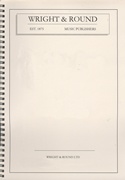We've found 1000 matches for your search. Order by
Results
-
 £59.95
£59.95 -
 £44.95
£44.95Strand on the Green (Overture) (Brass Band - Score and Parts)
Estimated dispatch 7-14 working days
-
 £26.50
£26.50The Acrobat (Trombone Solo with Brass Band)
Please note that there is no score included in this set. A full score is not available for this work
Estimated dispatch 7-14 working days
-
 £59.95
£59.95Three Musketeers, The (Brass Band - Score and Parts)
Estimated dispatch 7-14 working days
-
 £24.95
£24.95Two of the Tops (Eb and Bb Cornet Duet with Brass Band - Score and Parts)
Estimated dispatch 7-14 working days
-
 £59.95
£59.95Undaunted, The (Brass Band - Score and Parts)
Estimated dispatch 7-14 working days
-
 £50.90
£50.90The Rowan Tree (Tenor Horn Solo)
Estimated dispatch 7-14 working days
-
 £50.90
£50.90Il Barbiere di Siviglia - The Barber of Seville (10 Piece Brass Ensemble)
Parts included for:Part 1: Bb Trumpet or Bb Cornet and Eb Trumpet or Eb CornetPart 2: Bb Trumpet or Bb CornetPart 3: Bb Trumpet or Bb CornetPart 4: Bb Trumpet or Bb Cornet or Flugel HornPart 5: F Horn or Eb HornPart 6: Trombone (BC) or Trombone (TC)Part 7: Trombone (BC) or Trombone (TC)Part 8: Trombone (BC) or Trombone (TC)Part 9: Bass Trombone (BC) or Bass Trombone (TC)Part 10: C Tuba or Eb Bass or Bb BassPercussion
Estimated dispatch 7-14 working days
-
 £24.95
£24.95 -
 £19.95
£19.95Boys of the Old Brigade (Brass Band - Score and Parts)
Estimated dispatch 7-14 working days
